Featured Articles
Haymon Boxing on Spike

The rollout of Premier Boxing Champions continued on March 13 with Haymon Boxing’s inaugural show on Spike.
First the fights, which were contested at Citizens Business Bank Arena in Ontario, California.
Shawn Porter (24-1-1, 15 KOs) was coming off a majority-decision loss to Kell Brook, but had impressive victories over Paulie Malignaggi and Devon Alexander in his two fights immediately preceding that defeat.
Roberto Garcia was the intended ‘B-side” opponent. But Garcia failed to appear at the weigh-in and was replaced by Erick Bone of Ecuador. To make Bone’s task more difficult, he was called upon to take a long flight to California one day before the bout. Porter stopped him at 2:30 of round five in a lackluster fight.
Then, despite the fact that it was Friday the 13th, Premier Boxing Champions had a stroke of luck. Because Porter-Bone ended early, Chris Arreola vs. Curtis Harper was inserted in the telecast as a swing bout.
Arreola entered the ring weighing 262 pounds, 23 more than for his last fight. Harper was a blubbery 265. The assumption was that Curtis would get whacked out early. He’s a club fighter who was taken the distance by Jamal Woods (5 wins in 21 fights) in his last outing, a six-round bout in Arkansas. That assumption was further bolstered in round one when Harper was decked by a right hand and rose on wobbly legs, looking like 265 pounds of Jell-O.
But Arreola was woefully out of shape. And Harper had the mindset, if not the skills, of a good fighter. The bout devolved into two huge guys staggering each other back and forth in what resembled a barroom brawl highlighted by a POP-CRASH-POW seventh round. Arreola won a 76-75, 77-74, 78-73 decision, the latter score being a bit too kind to Chris. It did not speak well for his showing that he was pushed to the limit by a nomadic clubfighter. But it was highly entertaining television.
Then came the main event: Andre Berto (29-3, 22 KOs) vs. Josesito Lopez (33-6, 19 KOs).
Berto is Exhibit A for how Al Haymon was allowed to distort the decision-making process at HBO in an earlier era. Andre was a two-time national Golden Gloves champion, a bronze medalist at the 2003 World Amateur Championships, and a 2004 Olympian (representing Haiti as a consequence of his father’s dual citizenship). He turned pro in 2004, and was ESPN’s 2006 “prospect of the year.” Thereafter, Berto was on HBO too many times against soft opponents for inflated license fees with less-than-enthusiastic viewer response. No longer a “star of the future,” he entered the ring on March 13 having won two fights since 2010.
Lopez is a game fighter who has trouble getting by world-class opposition. He beats the guys he should beat and loses to the fighters that he’s expected to lose to. His marketability was built on a 2012 outing against Victor Ortiz in which Ortiz (ahead on points) retired after nine rounds because of a broken jaw. In Josesito’s next two fights, he was knocked out by Canelo Alvarez and Marcos Maidana.
Berto-Lopez was a fast-paced spirited fight. Lopez was ahead on the scorecards in round six, when Andre landed a sharp right hand that staggered Josesito. Then Berto hit him again, and Lopez went down. He rose, was knocked down for the second time, and referee Raul Caiz Jr. stopped the fight.
Insofar as the production of Premier Boxing Champions on Spike is concerned, the most readily apparent difference from PBC’s fights on NBC is the announcing team.
Dana Jacobson, a former ESPN Sports Center anchor who has hosted a variety of sports radio and television shows, opened the Spike telecast. Later in the evening, she was paired with Thomas Hearns. Hearns was a great fighter. He’s not a great commentator.
Scott Hanson, known primarily for his work as an NFL Network host, was the blow-by-blow announcer. Jimmy Smith (a veteran of Spike’s Bellator MMA telecasts) and Antonio Tarver (an expert analyst for Showtime Boxing before he tested positive for illegal performance-enhancing drugs) served as analysts. Nigel Collins had an off-camera role, unofficially scoring the fights.
Smith made the most credible commentating contributions to the telecast. When Hanson told viewers that Bone was in shape to fight Porter because he’d been working in the gym, Smith correctly noted, “There’s no such thing as fighting shape if you’re not getting ready for a fight.” (EDITOR NOTE: Bone in fact was getting ready for a fight, sometime in April, against foe TBD.) Smith also picked up nicely on an apparent ankle injury suffered by Bone just before he was stopped by Porter. There should have been a follow-up on Bone’s medical condition later in the telecast but wasn’t.
Overall, the announcing team devoted too much energy trying to sell the concept of Premier Boxing Champions. Phrases like “a new era in boxing” and “a new day for boxing” were repeated more than necessary. If the fights are good, viewers will figure it out. If the fights are bad, viewers will figure that out too.
A few more observations . . .
The fighters’ ringwalk music written by Hans Zimmer isn’t effective. I know it’s branding for PBC. But it takes away from the individuality of the fighters and has the homogeneous feel of a television game show. Ditto for the staged visuals of the combatants walking to the ring. That kind of entrance works for Wladimir Klitschko because he’s Wladimir Klitschko. None of the fighters we’ve seen so far on Premier Champions Boxing has a legitimate claim to being King of the World.
As with the March 7 NBC telecast, the ring announcer and roundcard girls were out of sight on Spike.
Once again, there was no mob in the ring before and after each fight. Once again, thank you, Al Haymon.
The 360-degree overhead ring camera was used less often on Spike than on the NBC telecast. In this instance, less is better.
As was the case on March 7, the ring ropes were black instead of red, white, and blue. That effectively highlighted the fighters.
PBC also introduced a new toy on the Spike telecast: a miniature camera installed on a headband worn by referee Jack Reiss during the first fight of the night. But contrary to its billing, the “ref cam” didn’t show viewers “what the referee sees” because it follows the referee’s forehead, not the referee’s eyes.
Where broader business issues are concerned; the past week has seen a flurry of press releases and comments by interested parties on all sides regarding PBC’s March 7 NBC telecast. Many of these statements have been evocative of the spin-doctoring that follows a presidential debate.
If Keith Thurman vs. Robert Guerrero is a “fight of the year” candidate, then 2015 will be a bad year for boxing. Guerrero won two rounds at most and was outlanded 211-to-104. He fought courageously and there was drama in round nine as to whether or not he’d survive. But boxing fans aren’t calling for a rematch.
The key talking points regarding the NBC telecast have revolved around ratings (which will dictate how much advertising is sold in the future – which, in turn, will be crucial to the success or failure of Haymon Boxing).
Team Haymon sent out a press release that declared, “The PBC on NBC telecast averaged 3.4 million viewers, ranking as the most-watched professional boxing broadcast in 17 years (“Oscar De La Hoya’s Fight Night” on FOX, 5.9 million, March 23, 1998).”
This implied to the uninitiated that De La Hoya fought on March 23, 1998. He didn’t. It was a Top Rank show, and the main event was Yory Boy Campas versus Anthony Stephens. Oscar (who was then with Top Rank) lent his name to the promotion.
Also, on October 15, 2005, NBC televised a live fight card headlined by Sergio Mora versus Peter Manfredo that drew 8,000,000 viewers. But Team Haymon and NBC say that doesn’t count because the telecast was the finale of a TV reality show.
Let’s put these numbers in perspective.
On May 11, 1977, Ken Norton fought Duane Bobick on NBC on a Wednesday evening in prime-time. As reported by Carlos Acevedo, that fight earned a 42% audience share and was watched by 48,000,000 people.
Obviously, those were different times. So let’s leave it at this for the moment. The advertisers will sort out the ratings. Either the audience for PBC will grow or it won’t. Boxing fans should hope that it does. But significant growth won’t be easy to accomplish.
The mainstream media is drooling over Mayweather-Pacquiao. Television networks, Internet sites, newspapers, and magazines that haven’t covered boxing for years will be on hand. But that might not translate into broader support.
By way of example; on March 7, the New York Times sports section listed fifty “TV highlights” for that day in its “Sports Calendar.” Premier Boxing Champions on NBC was not among them. Nor did the Times list PBC’s Spike card among the more than thirty “TV highlights” on its March 13 sports calendar.
And a few more thoughts in closing . . .
Berto-Lopez was for the “interim WBA world welterweight” title. Mercifully, that wasn’t mentioned during the Spike telecast. Also, had Haymon chosen to do so, he could have found a belt for Porter and Bone to fight for. He didn’t.
Ignoring the belts on Spike gives more credibility to PBC’s decision to match Danny Garcia against Lamont Peterson in an over-the-weight bout on NBC on April 11 rather than fight for their respective titles. Let’s see how Haymon handles the belts for Andy Lee vs. Peter Quillin on the same card and in other future beltholder fights.
All five of the PBC fights on NBC and Spike to date have matched black against Hispanic fighters. The next Haymon time buy on NBC features black vs. Hispanic and black vs. Irish. Ethnic matchmaking is a boxing tradition, but it’s a tradition that PBC might consider jettisoning. Great fights that become part of boxing lore like Ali-Frazier, Leonard-Hearns, Barrera-Morales, and Vazquez-Marquez stand on their own merit.
Finally, as of this writing, the favorite has won five-out-of-five fights on PBC’s Spike and NBC telecasts. That got old on premium cable a long time ago. And it will get old here fast.
The banner at the top of the home page for the Premier Boxing Champions website trumpets: “Premier Boxing Champions: Where the Next Legends Collide.” Taking Al Haymon at his word, boxing fans will be looking for some of those colliding legends.
* * *
HBO’s March 14 telecast started poorly with Isaac Chilemba vs. Vasily Lepikin and Steve Cunningham vs. Vyacheslav Glazkov. The main event – Sergey Kovalev vs. Jean Pascal – was worth watching.
Kovalev came into the bout with 26 wins, 23 knockouts, 0 losses, and a technical draw that should have been recorded as a win. Four months ago, he solidified his credentials as the best 175-pound fighter in the world with a 120-107, 120-107, 120-106 whitewash of Bernard Hopkins.
Pascal (29-2, 17 KOs) was regarded as a good measuring stick for Kovalev.
Kovalev was the aggressor in the early going and fought at a brisk pace. In round three, Pascal decided to fight with him and wound up being saved by the bell after a hard right hand draped him over the ropes and led to a correctly-called knockdown. It was the first knockdown scored against Pascal in his pro career.
Pascal rallied to win rounds five and six, but he tired noticeably in round seven. In round eight, Kovalev unloaded, leaving Jean on wobbly legs. Referee Luis Pabon stopped the bout at the 1:03 mark with Pascal pinned in a corner but still standing.
It was the first stoppage loss in Pascal’s career. He can take solace in the fact that Kovalev never knocked him off his feet. After the bout, Jean told television viewers and the crowd at the Bell Centre in Montreal, “I don’t know why the referee stopped the fight. It’s not hockey.”
Kovalev showed a good chin and an improving left hook to go with his power. The fact that he outlanded Pascal 122-to-68, indicates an effective delivery system for his arsenal. He got hit with too many solid punches, but that makes for exciting fights.
The biggest problem that Kovalev will have in the near future is getting marketable opponents to step into the ring with him. After the bout, Adonis Stevenson claimed that wants to fight Sergey, but he won’t.
* * *
I’ve said it before, and I’ll say it again. Staged pre-fight staredowns are stupid.
The latest example of this stupidity was on display at the final pre-fight press conference for Kovalev-Pascal. The fighters got into a shoving match. No damage was done, except to the dignity of the sport. Then the promotion decided that this was a good thing and sent out an email blast with the subject line “Download Kovalev-Pascal Altercation Video.”
Some day, a fighter will be hurt during a staredown altercation and a fight will be canceled. Let’s hope that “someday” isn’t May 1, when Floyd Mayweather and Manny Pacquiao face off at the weigh-in for boxing’s next fight of the century.
Thomas Hauser can be reached by email at thauser@rcn.com. His most recent book – Thomas Hauser on Boxing – was published by the University of Arkansas Press.
Featured Articles
Arne’s Almanac: The First Boxing Writers Assoc. of America Dinner Was Quite the Shindig
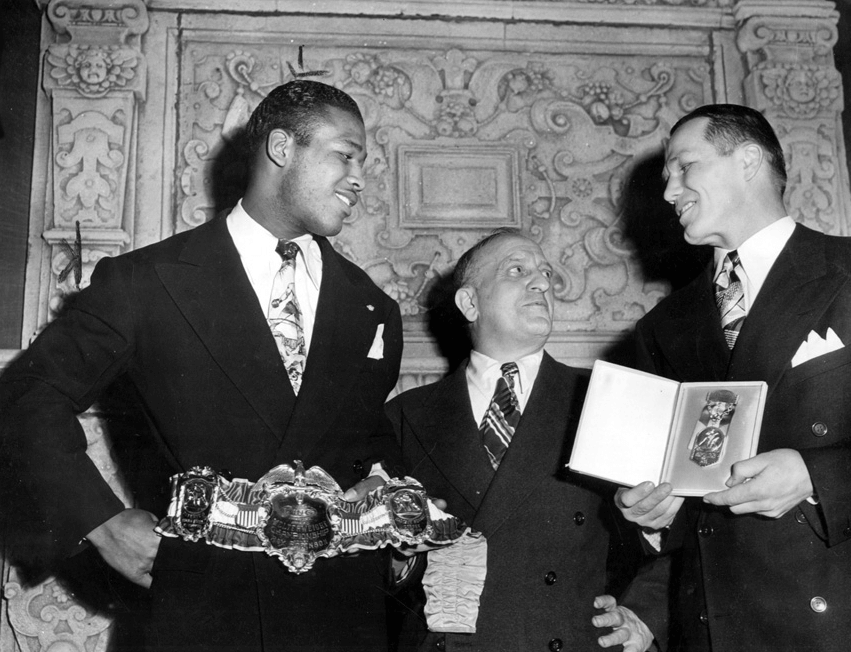
The first annual dinner of the Boxing Writers Association of America was staged on April 25, 1926 in the grand ballroom of New York’s Hotel Astor, an edifice that rivaled the original Waldorf Astoria as the swankiest hotel in the city. Back then, the organization was known as the Boxing Writers Association of Greater New York.
The ballroom was configured to hold 1200 for the banquet which was reportedly oversubscribed. Among those listed as agreeing to attend were the governors of six states (New York, New Jersey, Massachusetts, Pennsylvania, Connecticut, and Maryland) and the mayors of 10 of America’s largest cities.
In 1926, radio was in its infancy and the digital age was decades away (and inconceivable). So, every journalist who regularly covered boxing was a newspaper and/or magazine writer, editor, or cartoonist. And at this juncture in American history, there were plenty of outlets for someone who wanted to pursue a career as a sportswriter and had the requisite skills to get hired.
The following papers were represented at the inaugural boxing writers’ dinner:
New York Times
New York News
New York World
New York Sun
New York Journal
New York Post
New York Mirror
New York Telegram
New York Graphic
New York Herald Tribune
Brooklyn Eagle
Brooklyn Times
Brooklyn Standard Union
Brooklyn Citizen
Bronx Home News
This isn’t a complete list because a few of these papers, notably the New York World and the New York Journal, had strong afternoon editions that functioned as independent papers. Plus, scribes from both big national wire services (Associated Press and UPI) attended the banquet and there were undoubtedly a smattering of scribes from papers in New Jersey and Connecticut.
Back then, the event’s organizer Nat Fleischer, sports editor of the New York Telegram and the driving force behind The Ring magazine, had little choice but to limit the journalistic component of the gathering to writers in the New York metropolitan area. There wasn’t a ballroom big enough to accommodate a good-sized response if he had extended the welcome to every boxing writer in North America.
The keynote speaker at the inaugural dinner was New York’s charismatic Jazz Age mayor James J. “Jimmy” Walker, architect of the transformative Walker Law of 1920 which ushered in a new era of boxing in the Empire State with a template that would guide reformers in many other jurisdictions.
Prizefighting was then associated with hooligans. In his speech, Mayor Walker promised to rid the sport of their ilk. “Boxing, as you know, is closest to my heart,” said hizzoner. “So I tell you the police force is behind you against those who would besmirch or injure boxing. Rowdyism doesn’t belong in this town or in your game.” (In 1945, Walker would be the recipient of the Edward J. Neil Memorial Award given for meritorious service to the sport. The oldest of the BWAA awards, the previous recipients were all active or former boxers. The award, no longer issued under that title, was named for an Associated Press sportswriter and war correspondent who died from shrapnel wounds covering the Spanish Civil War.)
Another speaker was well-traveled sportswriter Wilbur Wood, then affiliated with the Brooklyn Citizen. He told the assembly that the aim of the organization was two-fold: to help defend the game against its detractors and to promote harmony among the various factions.
Of course, the 1926 dinner wouldn’t have been as well-attended without the entertainment. According to press dispatches, Broadway stars and performers from some of the city’s top nightclubs would be there to regale the attendees. Among the names bandied about were vaudeville superstars Sophie Tucker and Jimmy Durante, the latter of whom would appear with his trio, Durante, (Lou) Clayton, and (Eddie) Jackson.
There was a contraction of New York newspapers during the Great Depression. Although empirical evidence is lacking, the inaugural boxing writers dinner was likely the largest of its kind. Fifteen years later, in 1941, the event drew “more than 200” according to a news report. There was no mention of entertainment.
In 1950, for the first time, the annual dinner was opened to the public. For $25, a civilian could get a meal and mingle with some of his favorite fighters. Sugar Ray Robinson was the Edward J. Neil Award winner that year, honored for his ring exploits and for donating his purse from the Charlie Fusari fight to the Damon Runyon Cancer Fund.
There was no formal announcement when the Boxing Writers Association of Greater New York was re-christened the Boxing Writers Association of America, but by the late 1940s reporters were referencing the annual event as simply the boxing writers dinner. By then, it had become traditional to hold the annual affair in January, a practice discontinued after 1971.
The winnowing of New York’s newspaper herd plus competing banquets in other parts of the country forced Nat Fleischer’s baby to adapt. And more adaptations will be necessary in the immediate future as the future of the BWAA, as it currently exists, is threatened by new technologies. If the forthcoming BWAA dinner (April 30 at the Edison Ballroom in mid-Manhattan) were restricted to wordsmiths from the traditional print media, the gathering would be too small to cover the nut and the congregants would be drawn disproportionately from the geriatric class.
Some of those adaptations have already started. Last year, Las Vegas resident Sean Zittel, a recent UNLV graduate, had the distinction of becoming the first videographer welcomed into the BWAA. With more and more people getting their news from sound bites, rather than the written word, the videographer serves an important function.
The reporters who conducted interviews with pen and paper have gone the way of the dodo bird and that isn’t necessarily a bad thing. A taped interview for a “talkie” has more integrity than a story culled from a paper and pen interview because it is unfiltered. Many years ago, some reporters, after interviewing the great Joe Louis, put words in his mouth that made him seem like a dullard, words consistent with the Sambo stereotype. In other instances, the language of some athletes was reconstructed to the point where the reader would think the athlete had a second job as an English professor.
The content created by videographers is free from that bias. More of them will inevitably join the BWAA and similar organizations in the future.
Photo: Nat Fleischer is flanked by Sugar Ray Robinson and Tony Zale at the 1947 boxing writers dinner.
Featured Articles
Gabriela Fundora KOs Marilyn Badillo and Perez Upsets Conwell in Oceanside
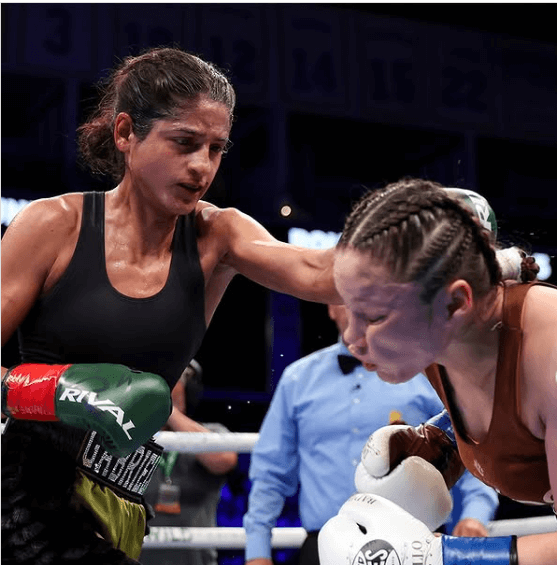
It was just a numbers game for Gabriela Fundora and despite Mexico’s Marilyn Badillo’s elusive tactics it took the champion one punch to end the fight and retain her undisputed flyweight world title by knockout on Saturday.
Will it be her last flyweight defense?
Though Fundora (16-0, 8 KOs) fired dozens of misses, a single punch found Badillo (19-1-1, 3 KOs) and ended her undefeated career and first attempt at a world title at the Frontwave Arena in Oceanside, California.
Fundora, however, proves unbeatable at flyweight.
The champion entered the arena as the headliner for the Golden Boy Promotion show and stepped through the ropes with every physical advantage possible, including power.
Mexico’s Badillo was a midget compared to Fundora but proved to be as elusive as a butterfly in a menagerie for the first six rounds. As the six-inch taller Fundora connected on one punch for every dozen thrown, that single punch was a deadly reminder.
Badillo tried ducking low and slipping to the left while countering with slashing uppercuts, she found little success. She did find the body a solid target but the blows proved to be useless. And when Badillo clinched, that proved more erroneous as Fundora belted her rapidly during the tie-ups.
“She was kind of doing her ducking thing,” said Fundora describing Badillo’s defensive tactics. “I just put the pressure on. It was just like a train. We didn’t give her that break.”
The Mexican fighter tried valiantly with various maneuvers. None proved even slightly successful. Fundora remained poised and under control as she stalked the challenger.
In the seventh round Badillo seemed to take a stand and try to slug it out with Fundora. She quickly was lit up by rapid left crosses and down she went at 1:44 of the seventh round. The Mexican fighter’s corner wisely waved off the fight and referee Rudy Barragan stopped the fight and held the dazed Badillo upright.
Once again Fundora remained champion by knockout. The only question now is will she move up to super flyweight or bantamweight to challenge the bigger girls.
Perez Beats Conwell.
Mexico’s Jorge “Chino” Perez (33-4, 26 KOs) upset Charles Conwell (21-1, 15 KOs) to win by split decision after 12 rounds in their super welterweight showdown.
It was a match that paired two hard-hitting fighters whose ledgers brimmed with knockouts, but neither was able to score a knockdown against each other.
Neither fighter moved backward. It was full steam ahead with Conwell proving successful to the body and head with left hooks and Perez connecting with rights to the head and body. It was difficult to differentiate the winner.
Though Conwell seemed to be the superior defensive fighter and more accurate, two judges preferred Perez’s busier style. They gave the fight to Perez by 115-113 scores with the dissenter favoring Conwell by the same margin.
It was Conwell’s first pro loss. Maybe it will open doors for more opportunities.
Other Bouts
Tristan Kalkreuth (15-1) managed to pass a serious heat check by unanimous decision against former contender Felix Valera (24-8) after a 10-round back-and-forth heavyweight fight.
It was very close.
Kalkreuth is one of those fighters that possess all the physical tools including youth and size but never seems to be able to show it. Once again he edged past another foe but at least this time he faced an experienced fighter in Valera.
Valera had his moments especially in the middle of the 10-round fight but slowed down during the last three rounds.
One major asset for Kalkreuth was his chin. He got caught but still motored past the clever Valera. After 10 rounds two judges saw it 99-91 and one other judge 97-93 all for Kalkreuth.
Highly-rated prospect Ruslan Abdullaev (2-0) blasted past dangerous Jino Rodrigo (13- 5-2) in an eight round super lightweight fight. He nearly stopped the very tough Rodrigo in the last two rounds and won by unanimous decision.
Abdullaev is trained by Joel and Antonio Diaz in Indio.
Bakersfield prospect Joel Iriarte (7-0, 7 KOs) needed only 1:44 to knock out Puerto Rico’s Marcos Jimenez (25-12) in a welterweight bout.
To comment on this story in the Fight Forum CLICK HERE
Featured Articles
‘Krusher’ Kovalev Exits on a Winning Note: TKOs Artur Mann in his ‘Farewell Fight’
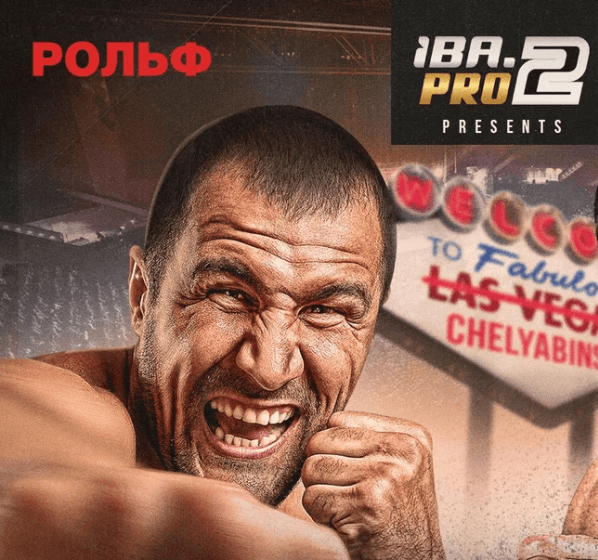
At his peak, former three-time world light heavyweight champion Sergey “Krusher” Kovalev ranked high on everyone’s pound-for-pound list. Now 42 years old – he turned 42 earlier this month – Kovalev has been largely inactive in recent years, but last night he returned to the ring in his hometown of Chelyabinsk, Russia, and rose to the occasion in what was billed as his farewell fight, stopping Artur Mann in the seventh frame.
Kovalev hit his peak during his first run as a world title-holder. He was 30-0-1 (26 KOs) entering first match with Andre Ward, a mark that included a 9-0 mark in world title fights. The only blemish on his record was a draw that could have been ruled a no-contest (journeyman Grover Young was unfit to continue after Kovalev knocked down in the second round what with was deemed an illegal rabbit punch). Among those nine wins were two stoppages of dangerous Haitian-Canadian campaigner Jean Pascal and a 12-round shutout over Bernard Hopkins.
Kovalev’s stature was not diminished by his loss to the undefeated Ward. All three judges had it 114-113, but the general feeling among the ringside press was that Sergey nicked it.
The rematch was also somewhat controversial. Referee Tony Weeks, who halted the match in the eighth stanza with Kovalev sitting on the lower strand of ropes, was accused of letting Ward get away with a series of low blows, including the first punch of a three-punch series of body shots that culminated in the stoppage. Sergey was wobbled by a punch to the head earlier in the round and was showing signs of fatigue, but he was still in the fight. Respected judge Steve Weisfeld had him up by three points through the completed rounds.
Sergey Kovalev was never the same after his second loss to Andre Ward, albeit he recaptured a piece of the 175-pound title twice, demolishing Vyacheslav Shabranskyy for the vacant WBO belt after Ward announced his retirement and then avenging a loss to Eleider Alvarez (TKO by 7) with a comprehensive win on points in their rematch.
Kovalev’s days as a title-holder ended on Nov. 2, 2019 when Canelo Alvarez, moving up two weight classes to pursue a title in a fourth weight division, stopped him in the 11th round, terminating what had been a relatively even fight with a hellacious left-right combination that left Krusher so discombobulated that a count was superfluous.
That fight went head-to-head with a UFC fight in New York City. DAZN, to their everlasting discredit, opted to delay the start of Canelo-Kovalev until the main event of the UFC fight was finished. The delay lasted more than an hour and Kovalev would say that he lost his psychological edge during the wait.
Kovalev had two fights in the cruiserweight class between his setback to Canelo and last night’s presumptive swan song. He outpointed Tervel Pulev in Los Angeles and lost a 10-round decision to unheralded Robin Sirwan Safar in Riyadh, Saudi Arabia.
Artur Mann, a former world title challenger – he was stopped in three rounds by Mairis Briedis in 2021 when Briedis was recognized as the top cruiserweight in the world – was unexceptional, but the 34-year-old German, born in Kazakhstan, wasn’t chopped liver either, and Kovalev’s stoppage of him will redound well to the Russian when he becomes eligible for the Boxing Hall of Fame.
Krusher almost ended the fight in the second round. He knocked Mann down hard with a short left hand and seemingly scored another knockdown before the round was over (but it was ruled a slip). Mann barely survived the round.
In the next round, a punch left Mann with a bad cut on his right eyelid, but the German came to fight and rounds three, four and five were competitive.
Kovalev had a good sixth round although there were indications that he was tiring. But in the seventh he got a second wind and unleashed a right-left combination that rolled back the clock to the days when he was one of the sport’s most feared punchers. Mann went down hard and as he staggered to his feet, his corner signaled that the fight should be stopped and the referee complied. The official time was 0:49 of round seven. It was the 30th KO for Kovalev who advanced his record to 36-5-1.
Addendum: History informs us that Farewell Fights have a habit of becoming redundant, by which we mean that boxers often get the itch to fight again after calling it quits. Have we seen the last of Sergey “Krusher” Kovalev? We woudn’t bet on it.
The complete Kovalev-Mann fight card was live-streamed on the Boxing News youtube channel.
To comment on this story in the Fight Forum CLICK HERE
-
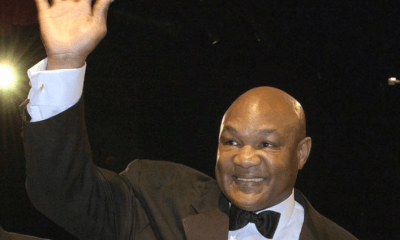
 Featured Articles4 weeks ago
Featured Articles4 weeks agoA Paean to George Foreman (1949-2025), Architect of an Amazing Second Act
-
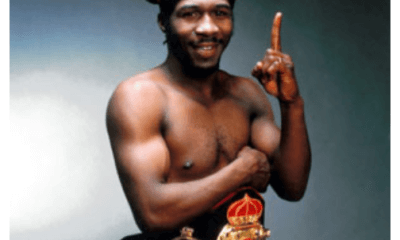
 Featured Articles4 weeks ago
Featured Articles4 weeks agoBoxing Odds and Ends: The Wacky and Sad World of Livingstone Bramble and More
-
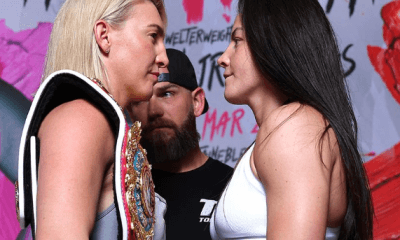
 Featured Articles4 weeks ago
Featured Articles4 weeks agoAvila Perspective, Chap. 319: Rematches in Las Vegas, Cancun and More
-

 Featured Articles3 weeks ago
Featured Articles3 weeks agoRingside at the Fontainebleau where Mikaela Mayer Won her Rematch with Sandy Ryan
-
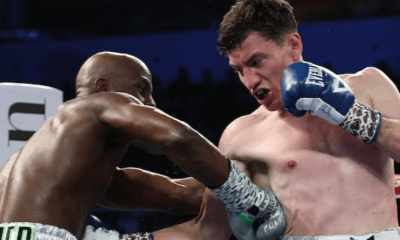
 Featured Articles3 weeks ago
Featured Articles3 weeks agoWilliam Zepeda Edges Past Tevin Farmer in Cancun; Improves to 34-0
-
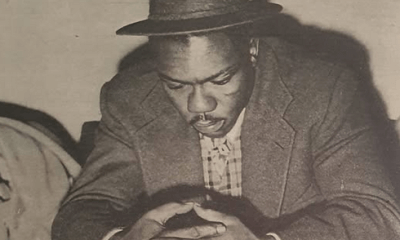
 Featured Articles3 weeks ago
Featured Articles3 weeks agoHistory has Shortchanged Freddie Dawson, One of the Best Boxers of his Era
-
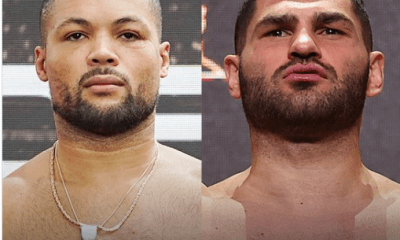
 Featured Articles3 weeks ago
Featured Articles3 weeks agoAvila Perspective, Chap. 320: Women’s Boxing Hall of Fame, Heavyweights and More
-
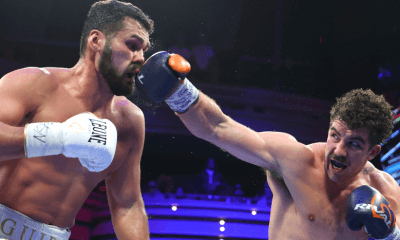
 Featured Articles2 weeks ago
Featured Articles2 weeks agoResults and Recaps from Las Vegas where Richard Torrez Jr Mauled Guido Vianello














